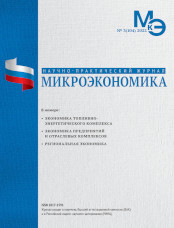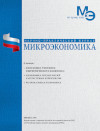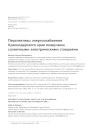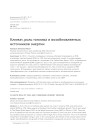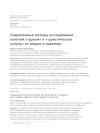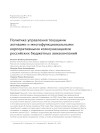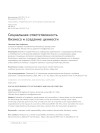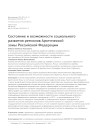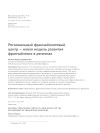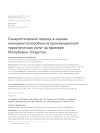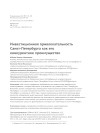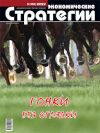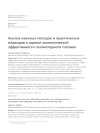Prospects for energy supply of the Krasnodar region by floating solar power plants
DOI: 10.33917/mic-3.104.2022.21-27
The article considers options for placing a floating solar power plant, compares floating and ground-based solar power plants, presents the results of modeling solar energy generation, optimizing the angle of inclination of solar modules relative to the horizontal plane, and choosing the optimal solution.
References:
1. Quarterly information review of the renewable energy market in Russia (IV quarter of 2021). URL: https://drive.google.com/file/d/1zZaVFkzt7qAuN72itWAaGoMJvKcILuzx/view
2. IRENA Solar Energy [Electronic resource]. URL: https://www.irena.org/solar
3. Krasnodar region//National portal «Priroda Rossii». URL: http://www.priroda.ru/regions/earth/detail
4. Russia in figures, 2020: Statistical Handbook / Rosstat. M., 2016. 550 p.
5. Global Solar Atlas. URL: https://globalsolaratlas.info/
6. Kubanskoe RDU/Russian Power System Operator. URL: https://www.so-ups.ru/odu-south/odu-south-rdu/rdu-kuban/
7. The most promising regions of Russia for the development of wind and solar energy have been identified. URL: https://www.kommersant.ru/doc/3283669
8. Khristoforov E.S., Ilkovskiy K.K. Prospects of Сreating Аloating Solar Power Plants in Russia. Economic strategies. 2020;7 (173):126-135.
9. Elistratov V.V. Renewable energy. Ed. 3rd add. SPb.: Ed. Polytechnic Univ., 2016. 424 p.
10. Perez Sky Diffuse Model. URL: https://pvpmc.sandia.gov/modeling-steps/1-weather-design-inputs/plane-of-array-poa-irradiance/calculating-poa-irradiance/poa-sky-diffuse/perez-sky-diffuse-model/
11. The Performance Assessment of Six Global Horizontal Irradiance Clear Sky Models in Six Climatological Regions in South Africa. URL: https://www.mdpi.com/1996-1073/14/9/2583
12. Leonardo Micheli: Energy and economic assessment of floating photovoltaics in Spanish reservoirs: cost competitiveness and the role of temperature, 2021. p. 10.
13. Floating solar PV to reduce water evaporation in water stressed regions and powering water pumping: Case study Jordan. URL: https://www.sciencedirect.com/science/article/pii/S0196890422003946


